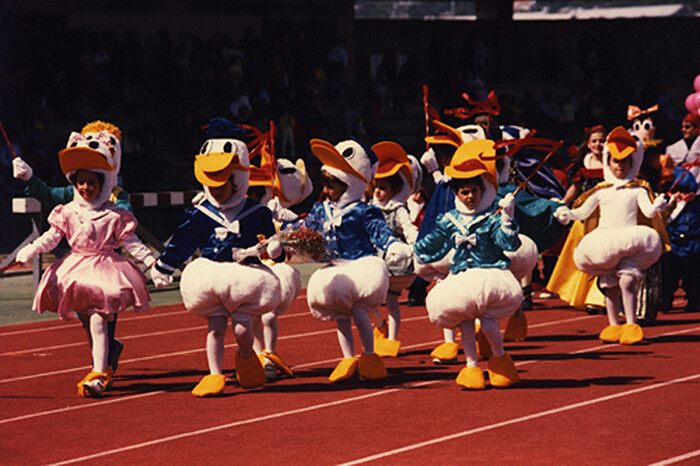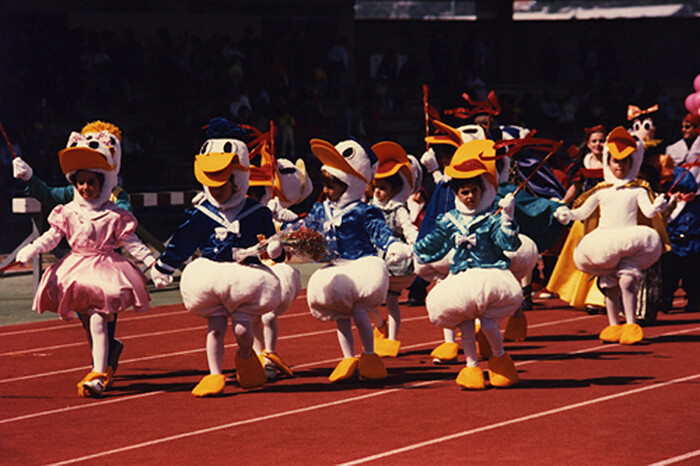Symmetry rules the world, as if god created it with a mirror in hand. Stereo Gallery in Poznań, western Poland, has two rooms like a man has a pair of hands, a pair of eyes, a pair of ears, two cerebral hemispheres, etc. The stereophony in the gallery’s name reflects the musical interests of the artists it represents; moreover, the place is run by the couple Zuzanna Hadryś and Michał Lasota. But this time around, they decided to invite an outside curator, Martha Kirszenbaum, whose show features works by four artists who reacted to its dual space. “Crime is on Both Sides,” the title says.
Kirszenbaum’s curatorial concept likens the division of the gallery’s space to that of a human brain. According to a popular psychology, the brain’s lateral hemispheres are responsible for either emotional or logical functions. Quite a ‘cerebral’ vantage point, to be sure, but what’s the harm in having a little fun?
The show however, consisting of four works only, translates this dichotomous division into different modes of storytelling, or, more precisely, structuring memory, both collective and individual. To the left, in the light room, Alexandre Singh’s intricate diagram composition of collages and lines on the walls offers a multitude of paths to follow. Depending on our imaginative skills, the work can function as an algorithm, combining surreal images, or as a portrait of sorts. It’s Singh’s way of depicting the personality of neurologist Leah Kelly. Indeed, Assembly Instructions (2011) is based on an interview the artist conducted with him.
Entering the adjoining, dark room, thus shifting from the left to the right hemisphere, one approaches more lax narrations. Artists burrow into the past in a much more haphazard way. Christodoulos Panayiotou’s Wonderland (2008) is a projection of slides, taken at parades in his hometown of Limassol (Cyprus), which he found in a local archive. Panayiotou chose mostly photos of children disguised as an unrelenting crowd of Mickeys (mice) and Donalds (ducks). Unexpectedly, the expression of nationality usually associated with parades is clouded over by imported pop culture. Nearby, Ida Ekblad’s film Timeisonyourside (2011) is screened. A homely sofa offers a comfortable screening of footage shot at the apartment of Ekblad’s grandmother, just before she was sent to a hospital. The camera moves around the woman’s possessions—books, artworks, things left on the table—while the artist sings her own personal “lullaby.” And the last work occupies both sides of the gallery: organic-like structures made from the printings of computer-created images, these bilateral shells, where nature melts with technology, were created by Aude Pariset (FXTridacna, 2011).
Overall, this tiny exhibition reminded me of a scene from an early episode of “Friends,” in which Phoebe says she does not believe in evolution. Ross, a paleontologist by profession, tries to convince her otherwise by showing her fossils from all over the world. “The real question is,” she replies, “who put those fossils there and why.” In case of this show, I know who put all the things there. But why? It’s all there—the natural and the artificial, reason and intuition, order and chaos. But the more I examined, the more superficial the curatorial construct seemed to be. Cracks appeared on its glossy surface. There is no “natural” discourse, and no uninhibited language, and I presume that the curator is merely taking into account that one discourse is not enough. Ross does not convince Phoebe of his evolutionary narration. “It’s a nice story but a little too easy,” she says. But jaded, disinterested, and disillusioned, as we all are, sometimes we feel the need to succumb to the power of a well-told story.





